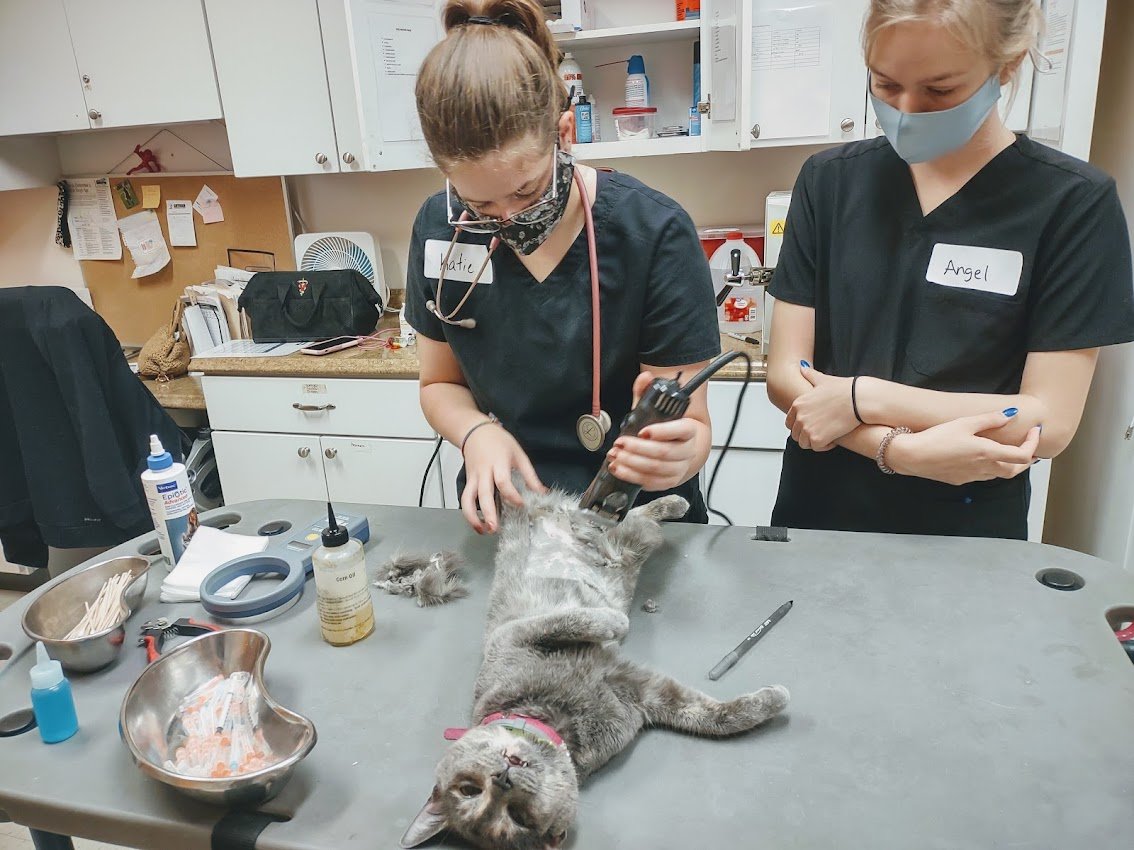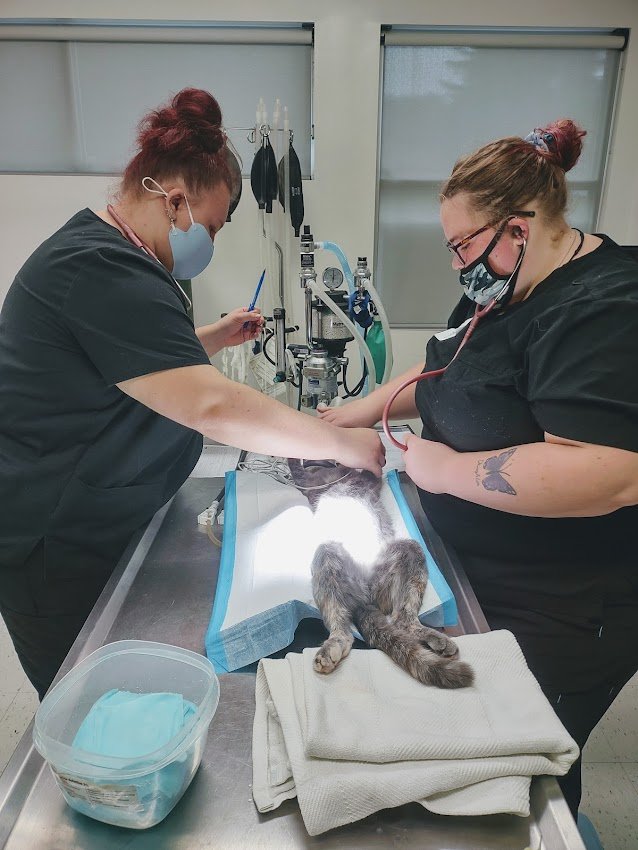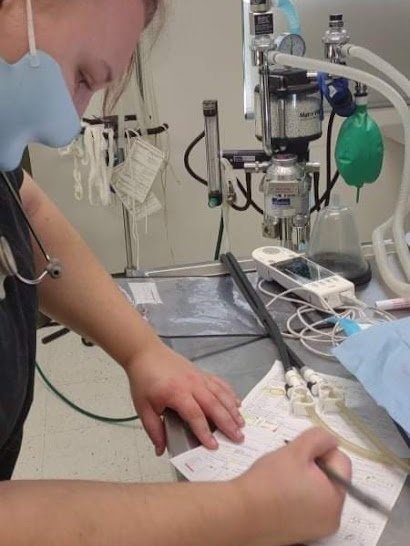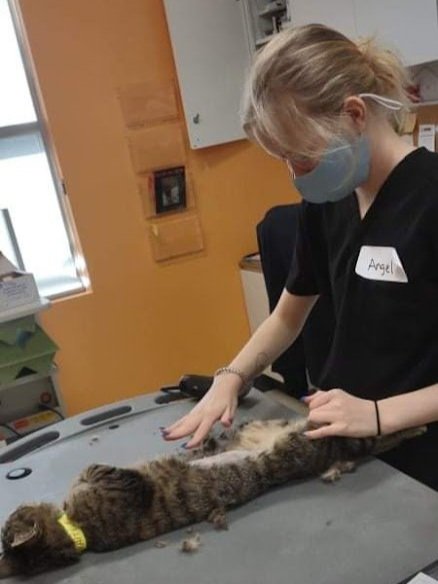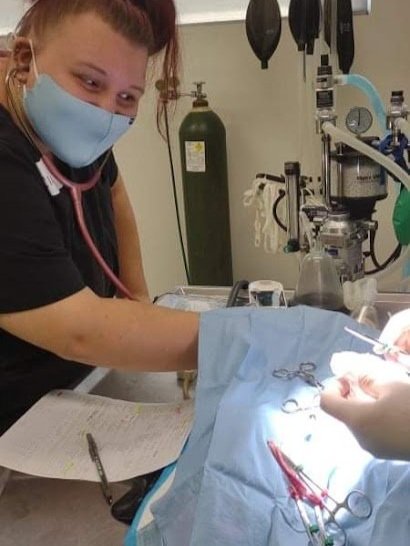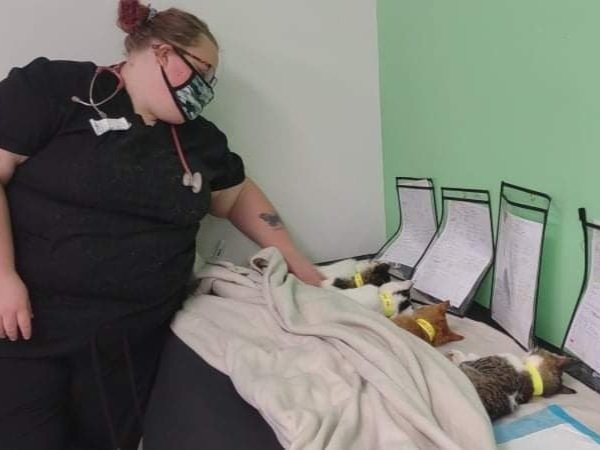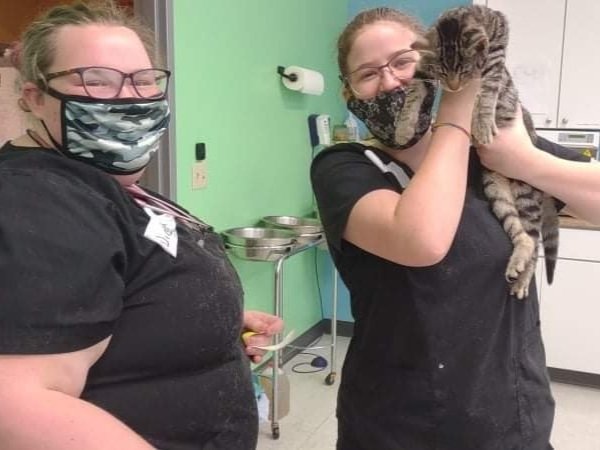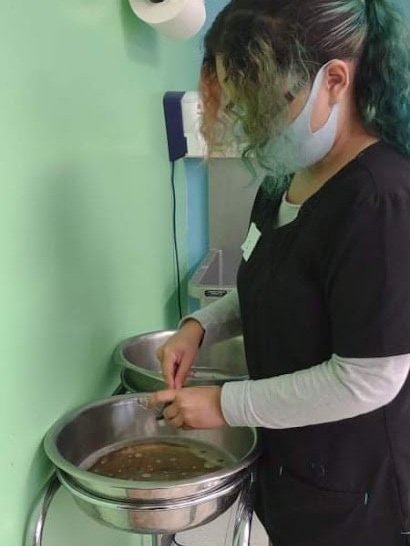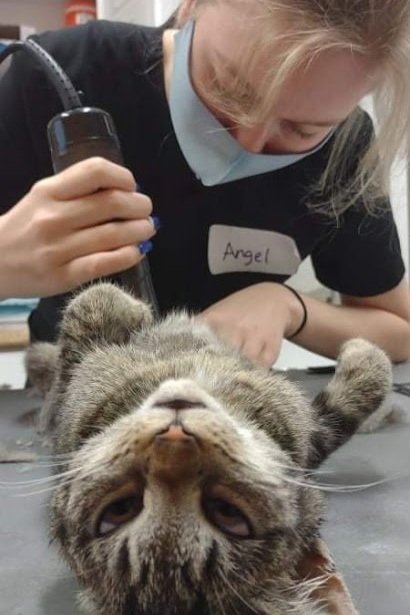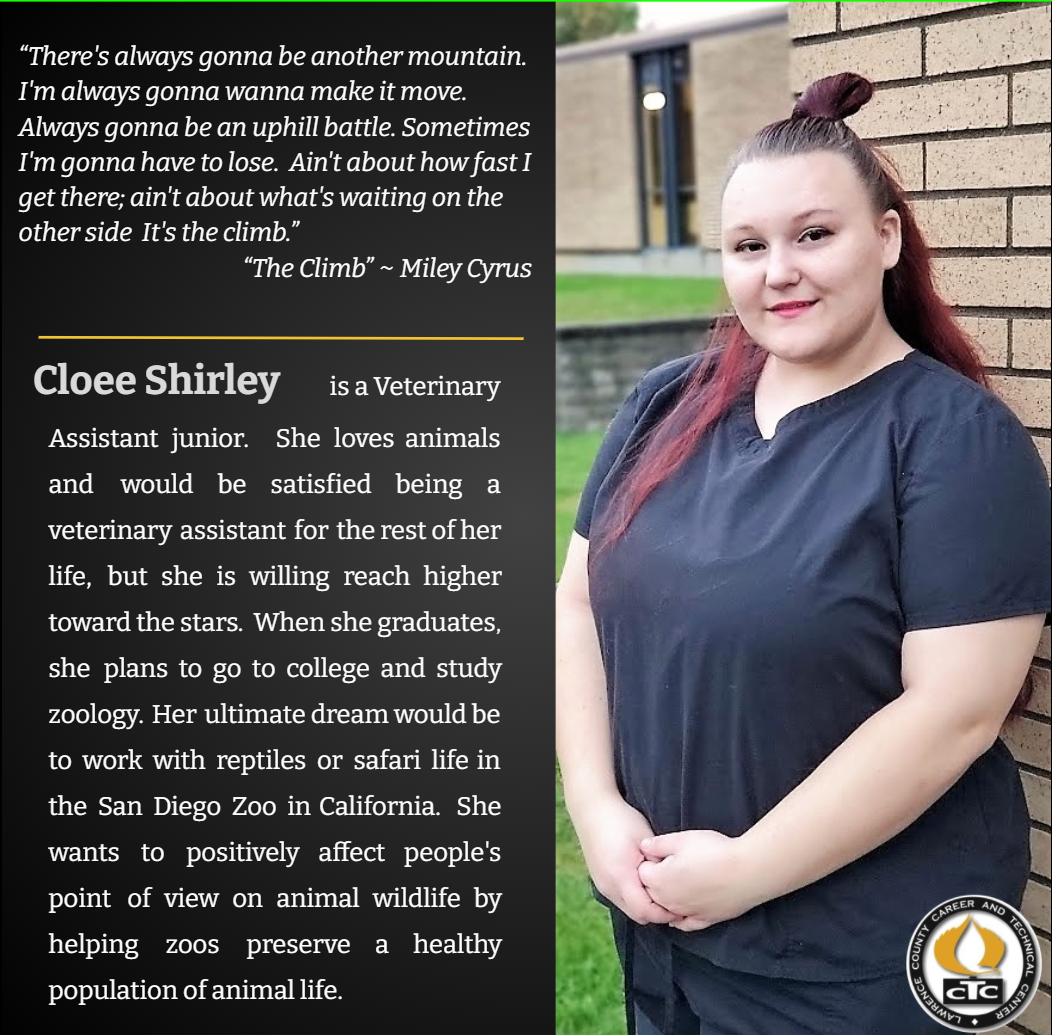Hands-on Learning at Tails of Hope
by Cloee Shirley, VA junior (Union)
On October 15th, LCCTC’s Veterinary Assistant juniors and seniors were selected to help set up surgeries at Tails of Hope, a spay and nurture clinic. The six students who attended were split into 3 teams: patient prep, surgical prep, and surgical instrument cleaning. Each task is extremely important to the veterinarian and makes sure the day runs smoothly, and our trained assistants were up to complete this task.
It all starts with the patient prep team who Anesthetizes feral cats that we are working on. Feral cats are typically skittish and unfriendly, so caring for them requires an understanding for safe handling to protect both the cat and the Assistant, alike. Once fully anesthetized, at this station, Veterinary Assistants assist to empty the bladder and shave the surgical area to ensure sanitary conditions during surgery before handing the kitty over to surgical prep and recovery.
At this next station, VA students helped to scrub down the animal and reconnect the anesthesia. The cats are then tattooed and have an ear tip cut and cauterized; both steps are for recognition to others that the animal is indeed sterile. After the procedure is over, vitals are taken every 5 minutes to ensure a smooth, healthy wake-up; because of their training, this is an easy task that our VA students are able to take on -- under the careful eyes of the experts at Tails of Hope. The recovery part is slowly waking the animal up from anesthesia while also ensuring that the temperature and vitals remain within normal limits. Our assistants carefully return the felines to their cages.
At the final station, VA students carefully scrub and wipe down surgical instruments, running them through an autoclave to ensure a sterile, clean set for the veterinarian’s next procedure. Each step is extremely crucial to ensure that infections do not occur; again, our students are up to the task as this is part of their training in the VA shop.
On this day, with the exception of two house cats, all thirty worked on were feral strays. A spay and neuter program like this is extremely important to limit the feral cat population. When unchecked, the conditions of these feral cats are hard to consider: swollen paws, matted fur, and blood-filled ticks traditionally plague this population.
The most important task the VA students accomplished was that thirty cats were now unable to repopulate. Because of the efforts of Tails of Hope and with help from LCCTC’s Veterinary Assistants, a small dent has been made to the big problem of stray cat overpopulation in our area.

